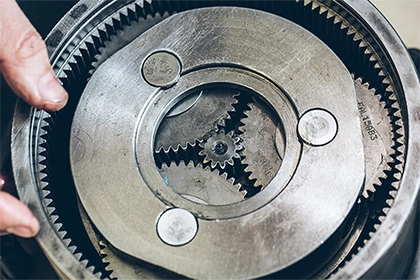
How do you control the speed of a dc motor?
DC motor speed control is crucial for a variety of industrial uses. For robotics, industrial, or automotive systems to function at their best, exact speed control is essential.
Controlling the speed of a DC motor is a fundamental aspect of many industrial applications. Whether it's in robotics, manufacturing, or automotive systems, precise speed control is crucial for optimal performance. This essay aims to provide a comprehensive understanding of the various methods and techniques used to control the speed of a DC motor. By exploring the basic principles, voltage control methods, current control methods, advanced speed control techniques, and factors influencing speed control, readers will gain valuable insights into this essential aspect of motor control.
I. Basic Principles of DC Motor Speed Control
DC motors operate based on the interaction between magnetic fields and electric currents. To control their speed effectively, it's important to grasp the underlying principles. By adjusting the voltage or current, we can manipulate the motor's speed. This section will delve into the relationship between voltage and speed, as well as introduce the concepts of armature control and field control.
II. Voltage Control Methods
Voltage control is a widely used method for regulating the speed of DC Motors. Two common techniques for voltage control are the use of variable resistors (potentiometers) and pulse-width modulation (PWM). Variable resistors provide a simple means of adjusting the voltage, whereas PWM involves rapidly switching the power supply on and off to achieve the desired speed. This section will explore these methods in detail, discussing their advantages and disadvantages.
III. Current Control Methods
In addition to voltage control, current control is another effective approach to regulate the speed of a DC motor. By adjusting the current flowing through the motor, we can achieve precise speed control. One common method is the use of current-limiting resistors. This section will explain the concept of current control, explore the application of current-limiting resistors, and discuss the pros and cons of current control methods.
IV. Advanced Speed Control Techniques
To achieve more advanced speed control, closed-loop control systems are often employed. These systems utilize feedback mechanisms such as encoders and tachometers to monitor the motor's actual speed and adjust it accordingly. Microcontrollers and motor controllers play a vital role in implementing these advanced techniques. This section will delve into the intricacies of closed-loop control systems and highlight the significance of feedback mechanisms and control devices.
V. Factors Affecting Speed Control
Several factors can influence the effectiveness of speed control in DC motors. Motor load, for instance, has a direct impact on the motor's speed response. Additionally, motor characteristics, such as torque-speed curves and efficiency, play a crucial role in determining the most suitable control methods. This section will explore these factors and emphasize the importance of considering motor specifications when implementing speed control techniques.
Conclusion
Controlling the speed of a DC motor is a complex yet essential task in various industries. This essay has provided a comprehensive overview of the methods and techniques used for speed control, including voltage control, current control, and advanced speed control techniques. By understanding the basic principles and considering factors that affect speed control, engineers and professionals can make informed decisions to optimize motor performance. With precise speed control, industries can achieve enhanced efficiency, accuracy, and overall productivity. By continuously exploring advancements in motor control technology, we can further refine our ability to control the speed of DC motors and unlock new possibilities for future applications.



Leave a Comment